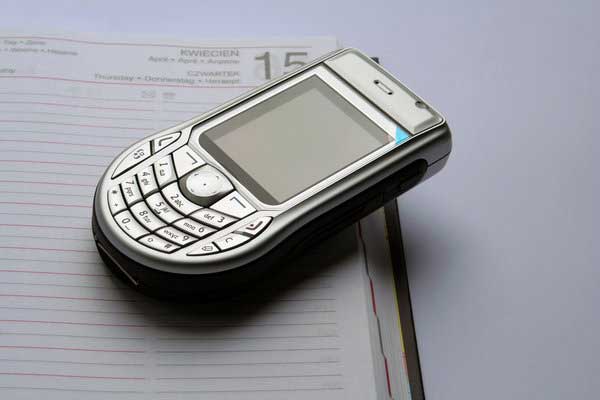In the early 2000s, Nokia was the undisputed king of the mobile phone industry. The iconic Nokia ringtone was heard everywhere as the company sold over 100 million phones per year and commanded a staggering 50% of the global mobile phone market with a peak market cap of nearly $300 billion.
But things took a turn in 2007 when Apple unveiled the revolutionary iPhone. As smartphones rapidly gained popularity, Nokia struggled to keep up. Annual phone sales crashed below 20 million and revenue collapsed from $60 billion down to just $6 billion. During the worst years, Nokia was losing $6 billion annually – twice as much as its revenue.

Microsoft tried to turn things around by acquiring Nokia’s phone business for $7.2 billion in 2013. But the partnership failed to revive Nokia’s fortunes. Microsoft would later write off the entire $7.2 billion acquisition cost plus more as a total loss before selling Nokia’s remains for just $350 million.
Yet against all odds, Nokia has endured. After retreating from the mobile phone business, the company doubled down on networking equipment. And when Microsoft exited phones, Nokia made an impressive comeback, tripling smartphone sales in 2021. The resurgent Nokia even cracked the top 15 bestselling phones in the US.
So how exactly did the former mobile phone titan fall from grace, narrowly avoid bankruptcy and manage to revive itself in the smartphone era?
The Fall of Nokia Begins
Nokia’s downfall can be traced back to 2007 – the fateful year when Apple announced the iPhone. Despite reaching its apex that same year, Nokia had failed to embrace the smartphone revolution.
Back in 2005, Nokia actually had a head start on smartphones with its Linux-based Maemo mobile OS and the Nokia 770 tablet. The company also dabbled in touchscreens before the iPhone. But Nokia failed to capitalize on these early smartphone initiatives.
Instead of embracing Android, Nokia clung to its dated Symbian OS. Symbian lacked key functionality and developer support, limiting users to mostly Nokia’s own mediocre apps. As rival platforms innovated, Symbian fell further behind.
On the hardware side, Nokia prioritized durability over performance and specs. While iPhones and Androids moved to 3G and 4G, many Nokia models lacked even basic 3G connectivity.
Nokia also over-relied on its brand recognition, figuring the Nokia name alone would be enough to sway customers. But the company was associated with basic cell phones rather than smartphones. Failing to establish a strong smartphone brand like iPhone or Galaxy proved detrimental.
So in summary, Nokia faltered on software, hardware and branding as the smartphone era dawned.
Microsoft Tries and Fails to Save Nokia
By the early 2010s, Nokia was in dire straits. Meanwhile, Microsoft had also floundered in the smartphone race. The two struggling companies joined forces to try and reverse their sagging mobile fortunes.
Microsoft executive Stephen Elop took over Nokia as CEO in late 2010 and quickly struck a deal making Nokia the prime Windows phone partner. Elop framed the partnership as Nokia’s last chance for survival.
But the Microsoft deal failed to resolve any of Nokia’s core problems. Windows Phone suffered from many of the same drawbacks as Symbian, including weak developer support. Nokia hardware remained subpar. And the clumsy Lumia branding hardly inspired consumers.
The Lumia 630 exemplified Nokia’s continued failure to compete on hardware. Released just before the iPhone 6 in mid-2014, the Lumia 630 was severely underpowered, lacking 4G, flash storage, front camera and even 3G connectivity.
Under Elop, Nokia’s market share and stock price cratered. In a desperate move, Elop leveraged Nokia’s sway over Microsoft to push for a full acquisition rather than pivoting to Android. The ploy worked, netting Elop an executive role back at Microsoft. But Nokia floundered under Microsoft, and the phone business was eventually scrapped.
How Nokia Staged an Improbable Comeback
Although Microsoft bought Nokia’s phone unit, other Nokia divisions survived. Freed from the burden of its failing mobile business, Nokia doubled down on networking equipment. The company shed its overconfidence and made long-overdue improvements like adopting 4G and 5G early on.
By focusing on its core networking strengths, Nokia climbed back to #3 among telecom equipment makers and regained Fortune 500 status by 2017. Meanwhile, Microsoft sold what remained of Nokia’s phone business to a group of Nokia veterans and Foxconn for just $350 million.
The new company, HMD Global, brought Nokia phones back to market in 2017 using Android rather than hitching its fate to Microsoft again. Although Nokia can’t challenge Apple and Samsung like its heyday, the revived phone business has found a profitable niche selling competitively priced handsets.
Last year, Nokia exceeded expectations by tripling smartphone sales on the popularity of models like the Nokia C100. While the mobile giant of the 2000s is unlikely to ever fully reclaim its former glory, Nokia has shown remarkable resilience in adapting to the smartphone age – emerging humbled, but ready to compete.
